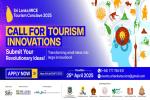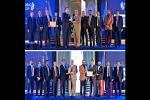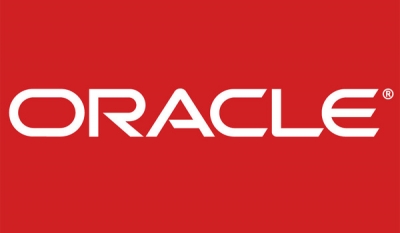Hong-Eng Koh, global lead and spokesperson for Oracle in Justice & Public Safety was one of the experts providing insights at the event, and was able to share his thoughts in a short Q&A session on what aspects of smart cities contribute to making a city safer.
Q: Which in your view are currently the most exciting development areas for emergency services?
Hong-Eng Koh: Big Data, Social, Mobility and Cloud are providing cities exciting ways to prevent, detect, respond to, and recover from emergencies. Most cities tend to be reactive and invest in technologies to respond to emergencies, for example building huge command and control centers to receive emergency calls, and to dispatch and manage first responders.
However, cities ought to invest more in preventing emergencies and in early detection of emergencies that are otherwise considered unavoidable.
There also needs to be investment in recovery from emergencies, such as providing shelters and food to displaced survivors.
Big Data analytics allow cities to study and identify threats, and to do further impact analysis. For example, policies need to be in place to ensure probable causes of such threats are licensed and regulated, so that these threats can be averted or at least mitigated.
One example is the transportation of hazardous materials (HAZMAT) through populated cities.
Through Big Data and analytics, cities can regulate such transportation through certain roads and at certain hours.
A good example is the US Department of Transportation, where they keep track and analyze data from more than 300,000 companies shipping more than 1 million daily shipments of HAZMAT.
Through social networking, every human is becoming a sensor.
With the “selfie” culture, we are seeing more and more incidents and emergencies being shared through social channels as opposed to official emergency/911 reporting channels.
This means traditional emergency call centers and sensors gain an advantage when supplemented by social monitoring and engagement.
It goes without saying that mobility is crucial in responding to emergencies.
It is also important in helping to recover from emergencies by supporting government case workers providing assistance to victims of emergencies.
At the recovery stage, many of the application processes and services are good candidates to be hosted as cloud services.
Examples include victim identification, victim and humanitarian assistance, humanitarian logistics, and emergency public information.
Q: What’s different in public safety systems in a smart city?
Hong-Eng Koh: Smart City is a vision that has to be supported by the various functions of running a city, including municipal services, social services, transportation, education, utilities, healthcare, and all the aspects that ensure a safe city.
To make a city safe, many agencies are involved. They need a range of justice & public safety systems to support them, including policing, judiciary, corrections, emergency, intelligence, and video surveillance.
Q: Smart cities facilitate the move from centralized to decentralized management, encouraging smarter citizens who now have more information to make intelligent decisions as well as participate more actively with the community. Can you give some examples of how citizen input has helped spark new ideas for emergency services?
Hong-Eng Koh: As mentioned earlier, every human is becoming a sensor, a sensor that provides real-time data! Collectively such big data and their analytics can help in identifying and therefore preventing threats.
Such human sensors can also help in the early detection of emergencies, from earthquakes to pandemics.
As such, social chatting and community sentiments become a key element in emergency management.
Through active social monitoring of such crowd-sourcing behavior, we can identify threats earlier, which in turn allows mitigation of the effects, even if they cannot be prevented.
And as well as being the eyes and ears at the frontline, social-enabled citizens can also be the mouths of emergency services, helping to relay relevant and real-time emergency information.
In addition to this, there are more and more applications on mobility that support mashed/peer-to-peer networking.
Typically during a major disaster, the telecommunications infrastructure can be damaged or overwhelmed.
Such mashed/peer-to-peer networking allows communication between any devices without the need for telecom infrastructure.
This is can be a crucial factor in effectively detecting and responding to emergencies.
Q: Oracle offers a range of technology advantages throughout the entire stack, from a complete suite of apps and connectivity, though to high performance analytics. How has this proved useful in giving an integrated view of emergency response?
“One disaster, many agencies” – that’s the major issue faced by cities. Through our technologies, solutions, and cloud services, Oracle enables cities to get a common operating picture of emergencies throughout all phases: prevention, detection, response, and recovery.
Such an integrated view allows better analytics, and more effective and efficient use of resources; ultimately leading to saving more lives and properties.
Good examples include Germany’s deNIS II and Mexico’s National Command and Control Center.
Q: Every city is different, even smart cities. How does Oracle provide the flexibility for different types of emergency response systems?
Hong-Eng Koh: Firstly, Oracle’s technologies are built based on standards allowing interoperability and information exchange. This is crucial in enabling a dynamic and adaptable platform to support the different needs of different cities.
One such major standard in support of emergency management is the XML-based National Information Exchange Model (NIEM) initiated by the US Department of Justice and US Department of Homeland Security.
Oracle supports this standard, which is also widely used by countries outside the US.
Secondly, Oracle offers various analytical tools from traditional business intelligence, through “R” statistical modeling, to state-of-the-art big data discovery.
These tools support different rules and models formulated by human experts to cater to different emergency scenarios and responses.
Q: No city develops in isolation. How has Oracle helped smart cities take into account their broader regional and national environment as well as global trends to find the optimal path forward?
Hong-Eng Koh: As a global company, Oracle has enabled many successful smart and safe city implementations worldwide.
Such best practices are being shared by many cities, extending across borders to benefit other cities and even nations.
The experience from such implementations also allows Oracle to invest in newer technologies, solutions, and cloud services to better cater to emerging trends, some of which may not yet even be envisioned by some cities.
www.oracle.com/us/products/applications/public-sector/niem/index.html
























